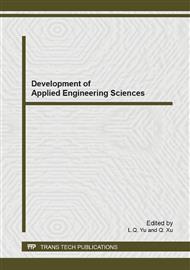p.308
p.313
p.317
p.322
p.327
p.334
p.339
p.345
p.349
On Emergency Response of Swarm Robotics for Chemical Hazards
Abstract:
For chemical disaster having a wide range, often accompanied by fire, smoke, toxic gases and other complex conditions, it make use of swarm robotics to achieve rapid access to information on the disaster site. This study is based on GPS module, magnetic sensors and ultrasonic array integrated navigation method, so that the robot can autonomously select the sport, avoiding obstacles for regional searches. The robot according to their current situation and interact with neighboring robots information, updated in real time decision-making, self-optimization of the search path, and the process of moving all the information collected is sent wirelessly to a remote data processing system. Processing system achieves the disaster site and submitted to the relevant reproduction panoramic rescue department, for the first time to develop optimal rescue plan to provide important technical support. In the laboratory level, the paper completed the entire system architecture to achieve a major part of the relevant hardware and software tests. Experimental results show that the feasibility of this design is accurate and reliable.
Info:
Periodical:
Pages:
327-333
Citation:
Online since:
October 2014
Authors:
Price:
Сopyright:
© 2014 Trans Tech Publications Ltd. All Rights Reserved
Share:
Citation:


